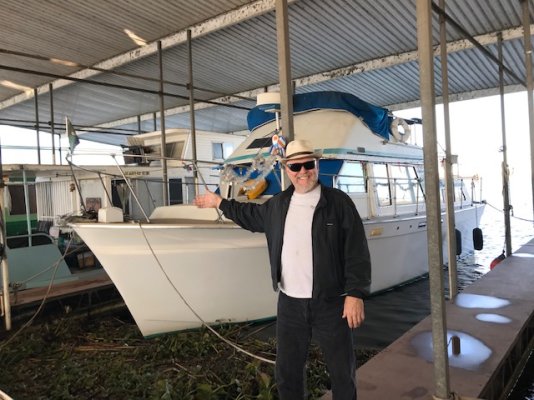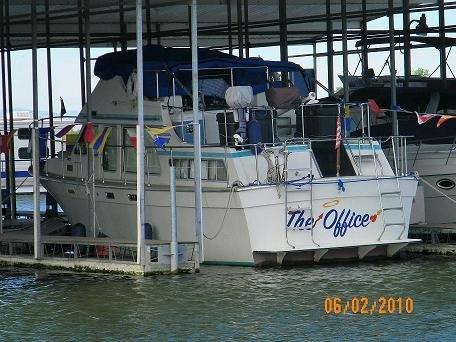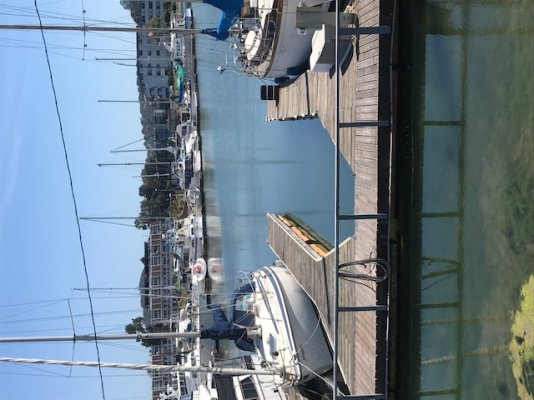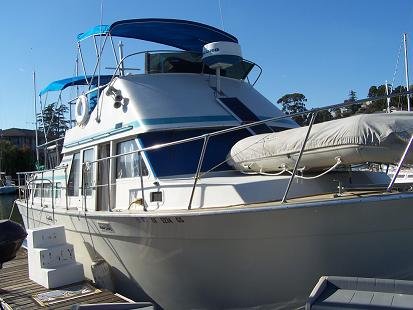Al
Guru
- Joined
- Apr 1, 2012
- Messages
- 2,206
- Location
- usa
- Vessel Name
- 'SLO'~BELLE
- Vessel Make
- 1978 Marben-27' Flybridge Trawler(extended to 30 feet) Pilothouse Pocket Cruiser[
Had my boat bottom swept after a six months period preceded by a haul out a year before that. At each point the zincs, all of them, were deemed to be in great condition. Not possible!!! So I have been inquiring from the wizards of smart on the waterfront here in SE Alaska, with really no satisfaction. Of course the term "Bonding" comes into play almost at the first inquiry, however, none of the fellows can give a definition or schematic of what "Bonding" looks like. There is no paint under the zincs placed on the rudder, There is a prop cape (The wheel polished by the diver is stated to be "Shiny Brass", no pink or reddish color.
The bar zinc on the rudder support and the three swim step struts are the remaining zincs.
There is no apparent corrosion showing anywhere on the engine. The pencil
zinc in the cooling system is normal for its six months change out.
The local machine shop that provides excellent prop repair services, suggested that I have a "Clean" boat . Hummmm. Boats around me are experiencing normal zinc wear calling for periodic replacement.
I have owned the boat for near 10 years and was in the practice of changing all the zincs on annual haul out and bottom paint. At those times the hub zinc would be the worst for wear allowing the other zincs to 'Maybe" last another season, but would change them anyway.
So fellow forum members, of smart! Let me know the universal thinking.
Cheers
Al
Frustrating, to say the least.
The bar zinc on the rudder support and the three swim step struts are the remaining zincs.
There is no apparent corrosion showing anywhere on the engine. The pencil
zinc in the cooling system is normal for its six months change out.
The local machine shop that provides excellent prop repair services, suggested that I have a "Clean" boat . Hummmm. Boats around me are experiencing normal zinc wear calling for periodic replacement.
I have owned the boat for near 10 years and was in the practice of changing all the zincs on annual haul out and bottom paint. At those times the hub zinc would be the worst for wear allowing the other zincs to 'Maybe" last another season, but would change them anyway.
So fellow forum members, of smart! Let me know the universal thinking.
Cheers
Al

Frustrating, to say the least.






 !!
!!
